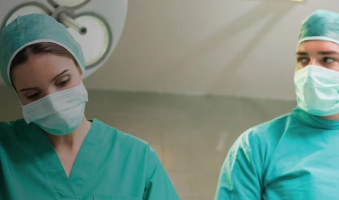Anaesthesia Fundamentals | Physiology | Lymphatic System and other Circulatory Fluids



Lymphatic System and other Circulatory Fluids
Session overview
Description
This session will demonstrate the structure and functions of the lymphatic system.
Learning objectives
By the end of this session you will be able to:
- Explain the anatomical structure of the lymphatic system
- Label diagram of a lymph node
- List the contents of lymph
- Describe the functions of the lymphatic system
Prerequisites
Before commencing this session you should complete:
- Capillary Dynamics and Interstitial Fluid (001-0619)
- Immunity (001-0627)
This session will initially describe the anatomical features of the lymphatic system, and then relate these features to the four main physiological functions it performs. These are:
- To help maintain intravascular volume by returning excess filtered fluid to the circulation
- To act as an important carrier system of chylomicrons from the intestine to the periphery
- The carriage of proteins from the interstitial space back into the circulation, and also of proteins manufactured in the liver into the circulation
- To carry lymphocytes from the bone marrow to the blood and from the interstitial space back into the blood
- Acute Medicine | Hoarseness and stridor 04 knowled...
- Posted By eIntegrity Healthcare e-Learning
- Posted Date: 2024-11-28
- Location:Online
- This session reviews the possible presentations of drug-induced cough and its causes.
- Acute Medicine | Haemoptysis 03 knowledge B
- Posted By eIntegrity Healthcare e-Learning
- Posted Date: 2024-11-28
- Location:Online
- This session explains the mechanisms associated with haemoptysis in bronchiectasis.
- Acute Medicine | Haemoptysis 03 knowledge A
- Posted By eIntegrity Healthcare e-Learning
- Posted Date: 2024-11-28
- Location:Online
- This session describes bronchiectasis and its causes.
- Acute Medicine | Haematemesis and melaena 01 knowl...
- Posted By eIntegrity Healthcare e-Learning
- Posted Date: 2024-11-28
- Location:Online
- This session reviews the causes of haematemesis and melaena. It covers the principles of resuscitation and risk stratification. It also discusses the management (both pharmacological and endoscopic) of patients who present with upper gastrointestinal blee
- Acute Medicine | Fever 01 knowledge A
- Posted By eIntegrity Healthcare e-Learning
- Posted Date: 2024-11-28
- Location:Online
- This session reviews Duke criteria and exceptions.


